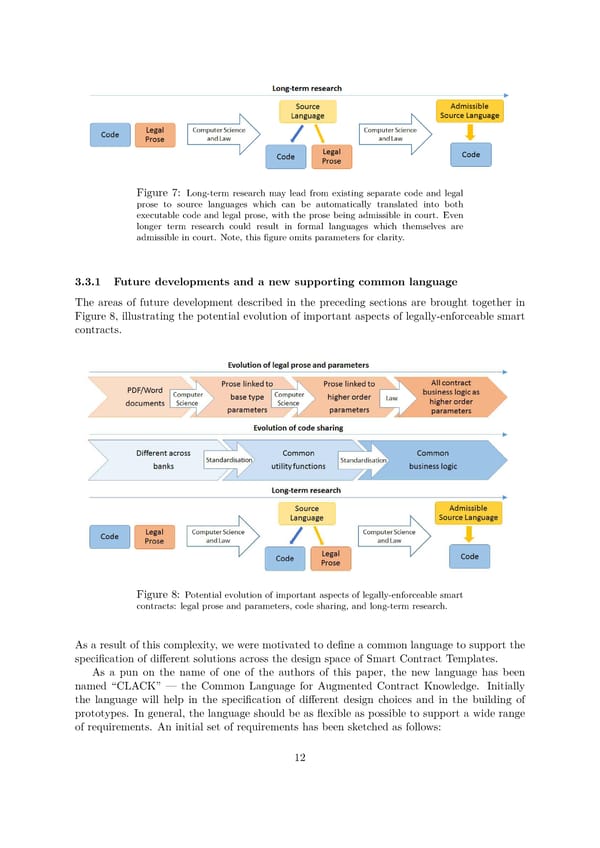Figure 7: Long-term research may lead from existing separate code and legal prose to source languages which can be automatically translated into both executable code and legal prose, with the prose being admissible in court. Even longer term research could result in formal languages which themselves are admissible in court. Note, this figure omits parameters for clarity. 3.3.1 Future developments and a new supporting common language The areas of future development described in the preceding sections are brought together in Figure 8, illustrating the potential evolution of important aspects of legally-enforceable smart contracts. Figure 8: Potential evolution of important aspects of legally-enforceable smart contracts: legal prose and parameters, code sharing, and long-term research. As a result of this complexity, we were motivated to define a common language to support the specification of different solutions across the design space of Smart Contract Templates. As a pun on the name of one of the authors of this paper, the new language has been named “CLACK” — the Common Language for Augmented Contract Knowledge. Initially the language will help in the specification of different design choices and in the building of prototypes. In general, the language should be as flexible as possible to support a wide range of requirements. An initial set of requirements has been sketched as follows: 12
 Position Paper | Smart Contract Templates Page 13 Page 15
Position Paper | Smart Contract Templates Page 13 Page 15